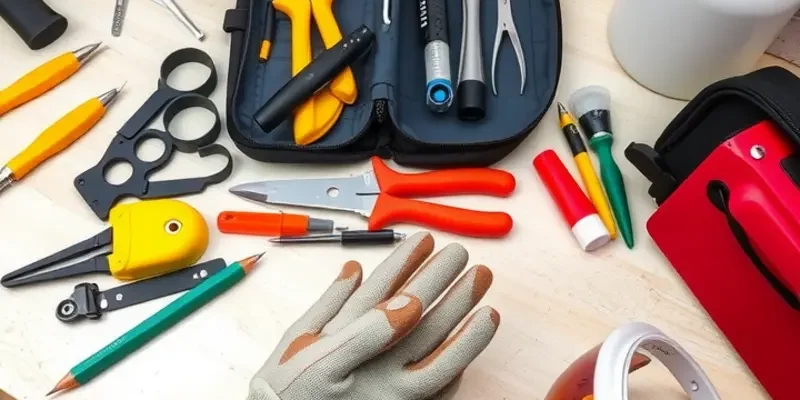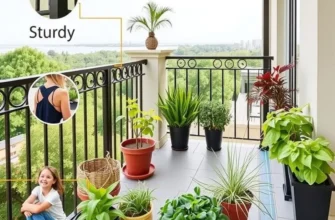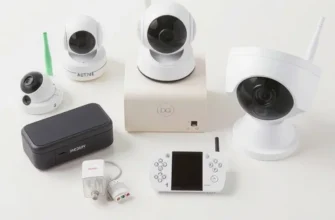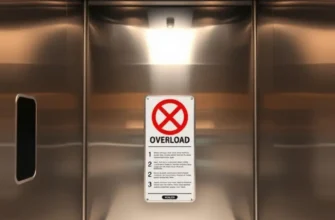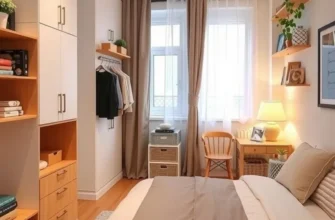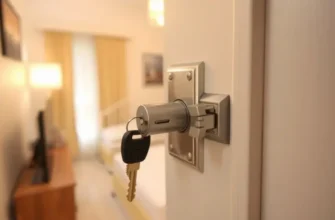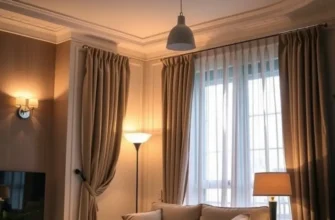Renting an apartment can sometimes come with challenges, especially when it comes to maintenance and repairs. However, taking proactive steps for simple DIY repairs can help renters feel empowered and contribute to a comfortable, secure living space. This guide highlights safe DIY solutions tailored for renters across the U.S. Whether you’re dealing with a flickering light, a squeaky door, or a stubborn leak, there are straightforward approaches to tackle these issues without compromising safety or your security deposit. Understanding which repairs you can manage on your own can save you time and money, not to mention reduce the worry of waiting for maintenance to arrive. By prioritizing safe methods and utilizing the right tools, renters can enhance their living experience. Let’s explore some essential DIY repair techniques that ensure both safety and comfort in your apartment.
Managing Small Repairs Safely

Performing DIY repairs in your apartment can be empowering, offering a sense of independence and personal investment in your living space. However, it’s crucial to approach these tasks with safety and precision. Before tackling any repair, ensure you have the correct tools and protective gear to minimize risks.
For starters, a basic toolkit is indispensable. Essential tools include a multi-bit screwdriver, adjustable wrench, pliers, tape measure, hammer, and utility knife. A flashlight, safety goggles, and work gloves are critical safety items, offering protection and better visibility.
Let’s begin with leaky faucets—a common issue. Start by turning off the water supply to prevent flooding. Gather your tools, including an adjustable wrench and replacement washers or cartridges. Carefully disassemble the faucet, noting each part’s position for reassembly. Replace damaged components and tighten all connections before turning the water back on. If you encounter substantial rust or persistent leaks, it might be time to call a professional to avoid further damage.
Creaky floorboards can be another nuisance, but they often require simple fixes. Start by locating the source of the noise. Use a drill with wood screws long enough to secure the board but short enough not to pierce through flooring materials. This simple measure can often silence the squeak. If the noise persists, consult your landlord or a professional, as structural issues may exist.
When addressing minor electrical issues, always safeguard yourself. Turn off power at the circuit breaker before beginning any work. Replacing a light switch or outlet can usually be handled safely with a basic understanding of wiring and a screwdriver. Verify the circuit is de-energized using a voltage tester before touching any wires. However, for more complex issues such as flickering lights or circuit breaker problems, prioritize safety by calling an expert to avoid potential hazards.
Each repair job requires attention to safety details. Here are a few additional tips:
- Ensure your workspace is well-lit and free from trip hazards.
- Always read and follow the instructions provided in repair manuals or guides.
- Maintain a clean and organized workspace to prevent accidents.
Remember, some repairs can safely be managed by renters, such as tightening loose screws or sealing small gaps. Yet, if you’re dealing with gas appliances, major plumbing, or extensive electrical work, these situations demand professional expertise. Knowing when to call for help is not a sign of inadequacy but a commitment to maintaining a safe living environment.
Empowering renters with DIY repair skills benefits both their confidence and their home. Equip yourself with the right tools, adhere to safety practices, and recognize the limits of your skillset to enjoy a well-maintained, secure apartment.
Enhancing Security Through DIY Projects
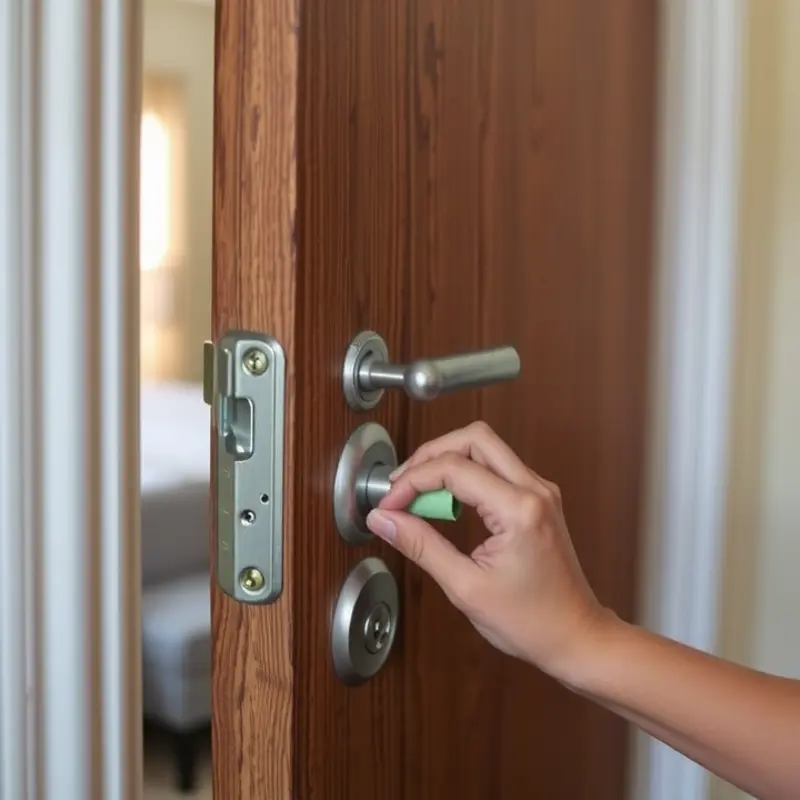
For renters, the thought of enhancing home security themselves may seem daunting, but simple DIY projects can make a substantial difference. These cost-effective measures not only safeguard your abode but also provide peace of mind.
Adding Additional Locks
Start with door security. Installing a secondary lock can be done in under 30 minutes. Opt for a chain or sliding bolt lock, which are typically easy to install.
- Gather Supplies: You’ll need a drill, screws, the lock mechanism, and a screwdriver.
- Mark Drill Holes: Hold the lock against the door and mark where the screws will go.
- Drill Holes: Carefully drill holes based on your markings.
- Attach the Plate: Screw the lock plate onto the door at the drilled spots. Ensure it’s secure.
- Align and Attach: Mark the corresponding spot on the door frame to complete the lock mechanism. Drill and attach as necessary.
Reinforcing Window Security
Windows are common points of entry for intruders. To enhance their security, you can use dowels or window locks.
- Measure the Window Tracks: Use a tape measure to determine the length of the dowel needed for each window.
- Cut the Dowels: Cut the dowels to fit snugly in the tracks when the window is closed.
- Install Window Locks: Clamp locks can provide added security. They’re easy to install—just tighten them along the frame to prevent the window from opening.
Setting Up Smart Home Devices
Leveraging technology can further bolster your security setup. Choose devices with easy installation, involving minimal equipment and no wiring.
- Choose Battery-Operated Devices: Look for smart devices like cameras or motion sensors that are battery-powered.
- Position Devices Strategically: Place cameras at entry points such as front and back doors. Ensure they face areas of concern.
- Connect to Wi-Fi: Use a mobile app to connect your devices to home Wi-Fi for real-time monitoring.
Deterring Intruders
Each of these security enhancements doesn’t just make break-ins more difficult—they act as deterrents too. A visible secondary lock or camera often convinces potential intruders to think twice, opting for an easier target.
For added financial tips on setting up your home without breaking the bank, make sure you check out rental-related financial planning.
With precautions in place, renters can focus on living comfortably. Incorporating these DIY security projects ensures not just protection, but also a significant boost in personal peace of mind.
Final words
Implementing safe DIY repairs not only encourages a sense of ownership and responsibility among renters but also enhances the comfort and security of their living spaces. By applying the tips shared, renters can effectively manage minor repairs and make thoughtful improvements that contribute to their overall well-being. Whether you’re fixing a leaky faucet or reinforcing your doors, taking proactive steps ensures a comfortable and secure environment. Always remember to prioritize safety and recognize your limits; some projects may require the expertise of professionals. Equip yourself with the right tools and knowledge, and you can confidently navigate the world of DIY repairs. Don’t hesitate to embrace the opportunity to make your apartment truly feel like home.

